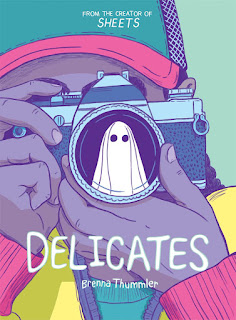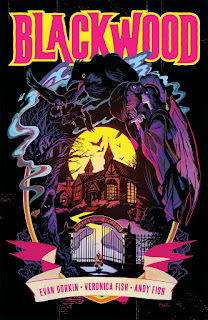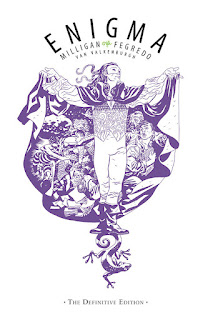Delicates by Brenna Thummler
I don’t want to say there’s always a sequel…but, these days, it’s the way to bet. Anything that has any degree of success will have a follow-up, telling more of the story or doing as much of the same thing as possible.
So when Brenna Thummler’s first graphic novel, Sheets , was an unexpected success a few years ago, what would her next project be?
Yes, obviously: the direct sequel Delicates , which came out three years later (in 2021). And, though I might sound dismissive, Delicates does all the things a good sequel should: it starts from the end of the first book (rather than rehashing the same story/issues/ideas), adds more details and richness to the world, examines slightly different (but related) concerns, and moves the overall story forward.
Sheets took place, in retrospect, in the fall of Marjorie Glatt’s seventh-grade year. (We didn’t know then exactly how old she was; we did roughly know the time of year.) Delicates jumps forward a bit, to the start of another school year. Summer is ending: Marjorie is about to enter eighth grade.
In the wake of the events of Sheets, Marjorie has a new friend group, mostly because the boy she has a crush on, Colton, is part of it. The rest are all girls, and at the center is Tessi, a mean-girl-type who controls the conversation and is low-key angry most of the time. Tessi has her own issues, mostly with a mother who is trying, in a well-meaning way but not one that has much chance of luck with the terminally sour and image-obsessed Tessi, to engage and lighten up her daughter. But we’re not really on Tessi’s side – we don’t have an antagonist here as we did with Mr. Saubertuck in Sheets, but she’s pretty close.
Wendel the ghost is still Wendel, still basically the same. That’s usually the deal with ghosts, of course. If you want to change, you have to do it before dying.
And there’s a new central character: Eliza, the girl on the cover. She’s the oldest daughter of a favorite teacher at this middle school, has just been held back to repeat eighth grade, and is clearly on the spectrum somewhere. (No specific diagnosis is given in the book: she’s just who she is. But she has obsessions and verbal tics, and I may just be more prone to notice those things.) Her particular obsessions are photography, ghosts, and their overlap: she spends a lot of time trying to photograph ghosts.
She doesn’t know ghosts are real – or, rather, doesn’t know how ghosts actually work in Thummler’s fictional world. She’s pretty sure ghosts are real. I don’t know if she pictures them as Charlie Brown kids-in-sheets, but that’s what they are here.
Delicates is partially a book about fitting in: Eliza is too weird, too specific, to really fit in, Marjorie is weird but can cram herself into a shape Tessi & crew will be friends with, and Wendell only really has Marjorie, so he hates any ways she changes that makes her less friendly to him.
It’s also, like Sheets, a book in which death looms, always off the page and never specifically mentioned, but there all the time. All of Marjorie’s family is still dealing with her mother’s death: her father is engaging more with life now, but seems to be running around trying to do all the things his wife used to do, to keep all the old plates spinning, and to tightly control the few things he feels competent to control. Her kid brother Owen is doing something similar, on the level of a first-grader. And Marjorie, of course, is trying to be a “normal” teenager – have a friends group, be part of the group, maybe have a boyfriend if she can ever figure that out.
By the end, they’ll all have to be themselves instead of the people they’re trying to be. This isn’t exactly a book with a moral, but the story it’s telling aims in that direction: be who you actually are, and let other people do the same. Those are excellent things to remember, and Thummler tells a good story around them.
This is most obviously for people around Marjorie and Eliza’s age – the ones figuring out who they are, alone and with their parents and with their friends and with any potential boy/girlfriends. But, like all good YA, it’s a fine story even for those of us who have been pretty sure who we are for a few decades now, since we sometimes can still tend to forget.
Reposted from The Antick Musings of G.B.H. Hornswoggler, Gent.
















































